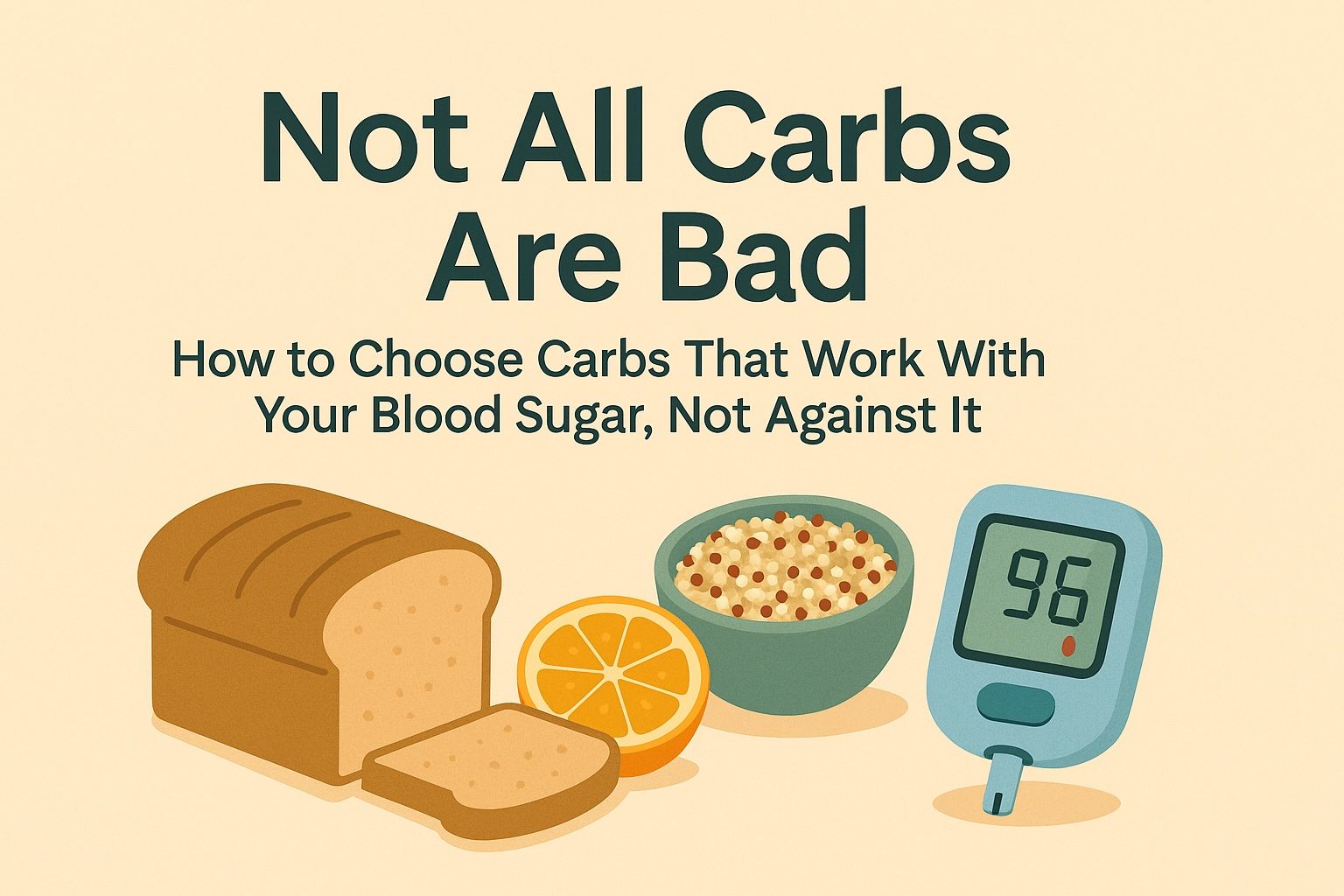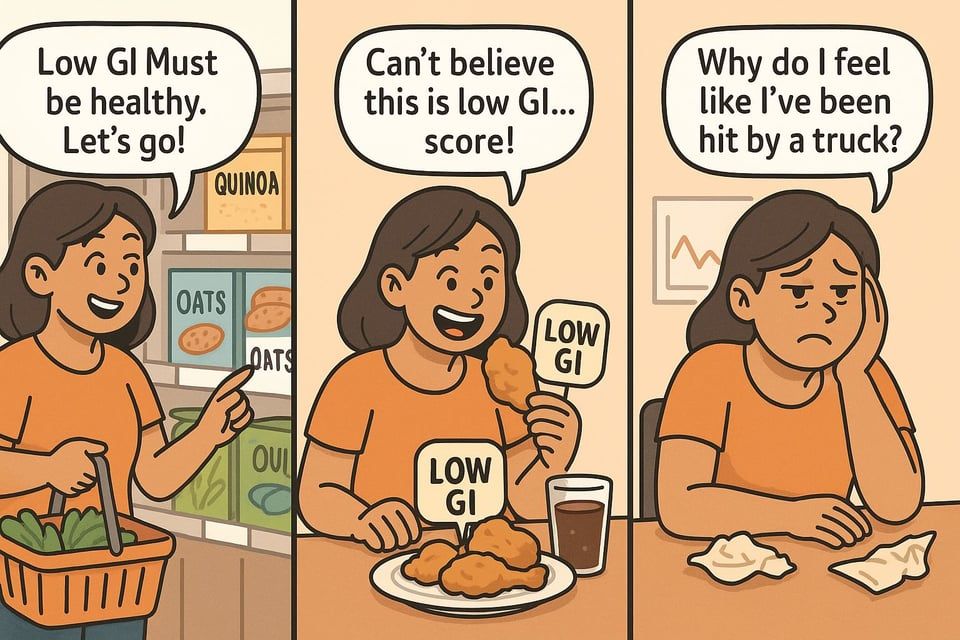Not All Carbs Are Bad: Healthy Carb Choices for Better Blood Sugar Control
Published on 5/27/2025 · 📖 4 min read

If you’ve been told to “cut carbs” to manage your blood sugar, you’re not alone. It’s one of the most common pieces of advice out there. But here’s the thing: it’s not the full story.
Because the truth is, carbs aren’t the enemy. Refined carbs are. The key isn’t cutting all carbs — it’s knowing which ones actually help your body and which ones throw your blood sugar out of whack.
Let’s break this down, simply and clearly.
🧠 Why Carbs Get a Bad Rap
Carbs have become a bit of a scapegoat — like that one kid in class who always got blamed when something went wrong.
The problem? We tend to treat all carbs the same. But they’re not.
There’s a huge difference between a warm bowl of oatmeal and a glazed donut. One gives your body lasting energy, the other gives you a quick sugar spike and crash. And yet, both get labeled “carbs.”
That’s where the confusion starts — and where we set the record straight.
🌾 How Refined Carbs Took Over
Let’s rewind a bit. Traditional diets — especially in places like India — were packed with high-quality carbs like millets, pulses, barley, and unpolished grains. These were nutrient-dense, fiber-rich, and super satisfying.
But then came industrialization. Food companies needed longer shelf lives and quicker prep times. So they stripped grains down, removed the fiber, and created “refined carbs” like white rice, polished wheat, and sugary breakfast cereals.
Convenient? Yes. Good for your body? Not so much.
And as more people swapped out whole grains for white bread, rates of diabetes and other metabolic issues started climbing.
🔬 What the Research Shows
A huge study — we’re talking over 47,000 people tracked for more than 30 years — found that the more high-quality carbs people ate (like whole fruits, legumes, and whole grains), the more likely they were to stay healthy as they aged.
On the flip side, the more refined carbs they ate, the less likely they were to reach older age without chronic diseases.
The takeaway? It’s not about “low carb” or “high carb.” It’s about smart carbs. Or if you’re Googling: “low glycemic carbs,” “diabetes-friendly carbs,” and “healthy carbs for blood sugar.”
🍞 Refined vs. High-Quality Carbs
Let’s keep it simple:
❌ Refined Carbs: White bread, white rice, sugary snacks
Refined carbs digest fast — like a rollercoaster that ends in a sugar crash.
✅ High-Quality Carbs: Quinoa, oats, lentils, fruits, millets, barley
High-quality carbs digest slow — they give you energy without spiking your blood sugar.
🍽️ How to Eat Carbs Without Spiking Your Glucose
Here’s the game plan:
- Pair your carbs with protein, fat, or fiber. It slows down how fast sugar hits your bloodstream.
- Eat veggies or protein first. It’s called the “preload rule” — and it works.
- Watch portions, not with fear — with curiosity. You’re not avoiding carbs, you’re learning how to use them.
Example: Quinoa + grilled veggies + Greek yogurt = a steady energy meal. White rice + sweet sauce? That’s a glucose spike waiting to happen.
😎 GlucoSpike AI Tip: Let Tech Be Your Food Buddy
Not sure how a certain carb will affect you? That’s where GlucoSpike AI comes in.
You can:
- Log or scan meals to get real-time glucose insights
- Predict your response before you eat
- Discover patterns over time (like “millets + lentils = 🔥 glucose control”)
One user told us: “Turns out oats with peanut butter works way better than oats with banana.” The app helped her spot it in a week.
✅ Your Simple Takeaway
Carbs aren’t the problem. The type of carb — and how you eat it — makes all the difference.
So instead of fearing carbs, start getting curious. Choose ones that work with your body, not against it.
✨ Smart carbs. Balanced meals. Better blood sugar.
That’s the real win.
 GlucoSpike AI
GlucoSpike AI 

